What Is Qixiong Ruqun?

When talking about Hanfu, one style you can’t skip is the Qi Xiong Ruqun (chest-high skirt). Just like how people immediately picture the full-figured beauty of Tang dynasty women, this style has become almost symbolic. The Tang dynasty was a golden age of culture and prosperity in China, when women’s social status rose and clothing became more bold, elegant, and expressive compared to earlier times.
The Qi Xiong Ruqun hanfu is easily one of the best-selling Hanfu styles today. In fact, when I first entered the Hanfu community, this was the very first piece I bought. A design that was popular more than a thousand years ago is now making a comeback among young people in China—so what makes it so special?
Ⅰ. The Historical Roots of the Ruqun
1. Origins and Peak
Although many associate it with the Tang dynasty, the Ruqun hanfu actually appeared as early as the Northern and Southern dynasties. It reached its height of popularity during the Sui and especially the Tang period, when it became a fashionable choice both at court and among common people.
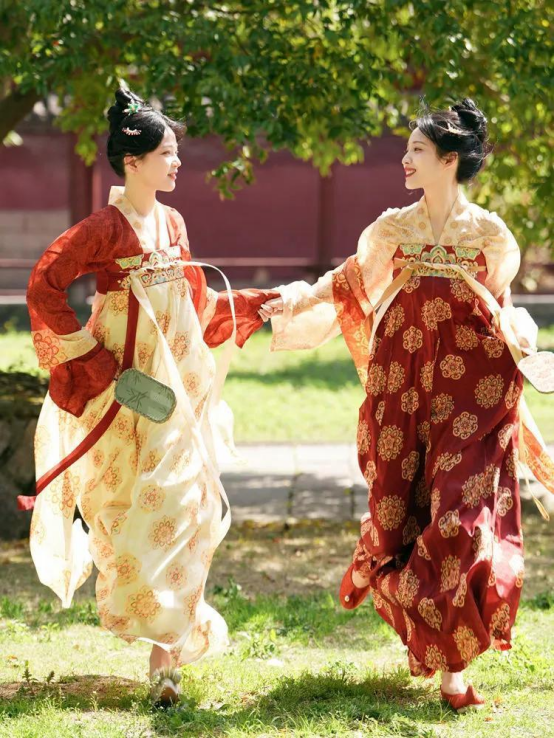
Tied to the Tang Dynasty’s open and inclusive vibe—where women held relatively higher social status and Chinese and foreign cultures blended—Qixiong Ruqun’s loose silhouette and vibrant colors perfectly mirrored this era’s spirit.
2. Why It Later Faded
By the Song dynasty, Neo-Confucian values shifted fashion trends toward modesty and simplicity. Styles with cinched waists and narrow sleeves became the norm, gradually replacing the more striking chest-high Ruqun hanfu.
Ⅱ. What Makes the Ruqun So Captivating?
In the Tang dynasty, the Ruqun was everyday wear for women and was often called yanfu (casual dress). It consisted of a short blouse (襦/ru) paired with a long skirt (裙/qun).
The most iconic version, known today as the Qi Xiong Ruqun (literally “chest-high skirt,” though “high-waisted Ruqun” is more accurate), raised the skirt all the way above the chest and tied it with ribbons, worn together with a short jacket on top. This design elongated the figure and created a graceful, flowing look when walking.
Let me just add a quick note here—on our website, the Spring Return set is actually a Qi Xiong Ruqun hanfu. Would you enjoy this style?

Necklines of the blouse came in different styles—round, square, and more—often paired with half-sleeves or long scarves to add extra elegance and movement. Fabrics were carefully chosen, usually lightweight and soft materials like silk gauze, damask, or fine cotton. Colors ranged from purples and reds to blues, yellows, and whites, blending into vibrant, painterly ensembles.
Ⅲ. FAQs for First-Timers
Q1: Will the skirt slip down when tied under the bust?
A: Usually not. It stays put with multiple ties. Historically, the skirt had natural weight—from thick fabric or embroidered patterns—keeping it draped nicely. Some styles on our site even have transparent shoulder straps for extra security.
Q2: What’s the difference between one-piece and two-piece skirts?
A: One-piece skirts are a single panel wrapped around the body, true to Tang Dynasty originals. Two-piece styles (more common in modern adaptations) have front and back panels stitched together, making them easier to put on/take off.
Q3: Can curvy or plus-size people wear this set?
A: Absolutely! Tang aesthetics favored full, healthy figures. Just check our size chart to find your fit.
Since these are modern reproductions, if you can’t find your size, unfortunately it may mean that specific style won’t fit.
Ⅳ. Fun Historical Tidbits
For noblewomen, Ruqun hanfu were often made of fine silk and satin, richly embroidered with flowers, birds, or cloud patterns, and sometimes even decorated with pearls and gemstones. As they walked, the hem swayed gracefully, glittering with luxury.
For ordinary women, Ruqun was usually made of linen or coarse silk in softer shades like light green, pale pink, or moon-white. Though simple, the look was neat and elegant.
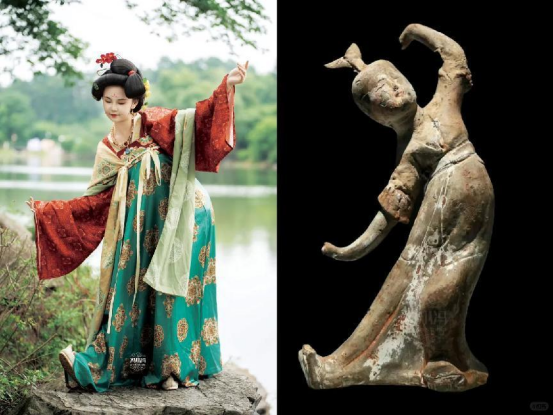
A famous story in The Tale of Li Wa 《李娃传》 illustrates this contrast.
Li Wa, a young woman from Chang’an, first appeared as a wealthy lady wearing a chest-high silk skirt embroidered with mandarin ducks. Later, after her family fell into poverty, she could only wear a plain high-waisted skirt in light blue coarse cloth—her changing social status was reflected directly in her clothing.
It’s also worth noting that Tang blouses often had very low necklines, especially in the early Tang and Wu Zhou periods, with depictions of women showing partially revealed chests being quite common.
As one poem describes:
a pale red blouse just covering her chest, skin like snow, face like a flower
—a touch of sensuality that left endless room for later imagination.

Summary
In later dynasties, the cultural atmosphere grew more restrained, no longer as open and inclusive as in the Tang era. Do you ever feel nostalgic for the Tang dynasty’s bold sense of beauty and its distinctive fashion? We love to hear your thoughts and invite you to share in the comments.
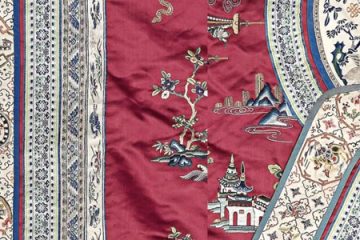
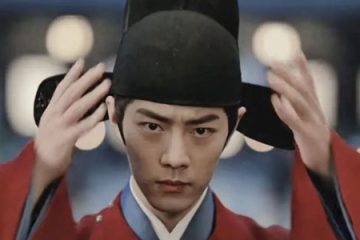
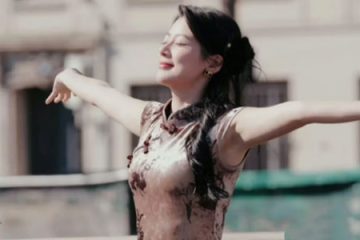
0 Comments